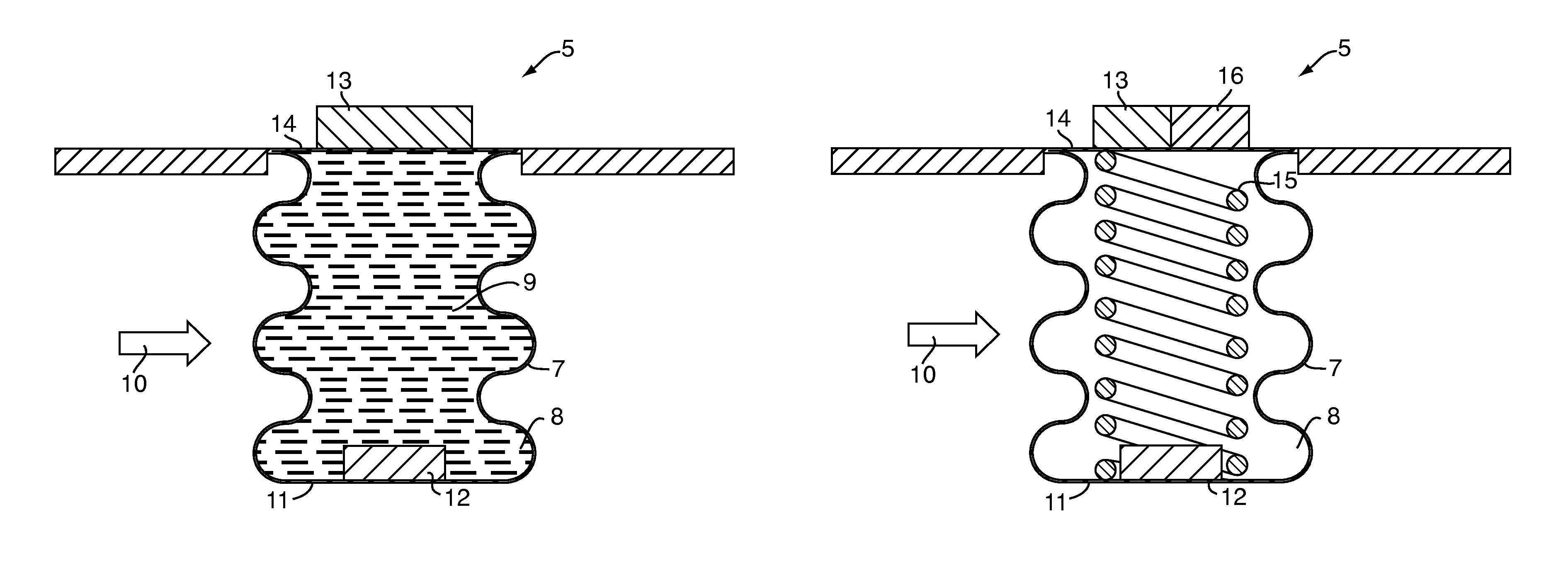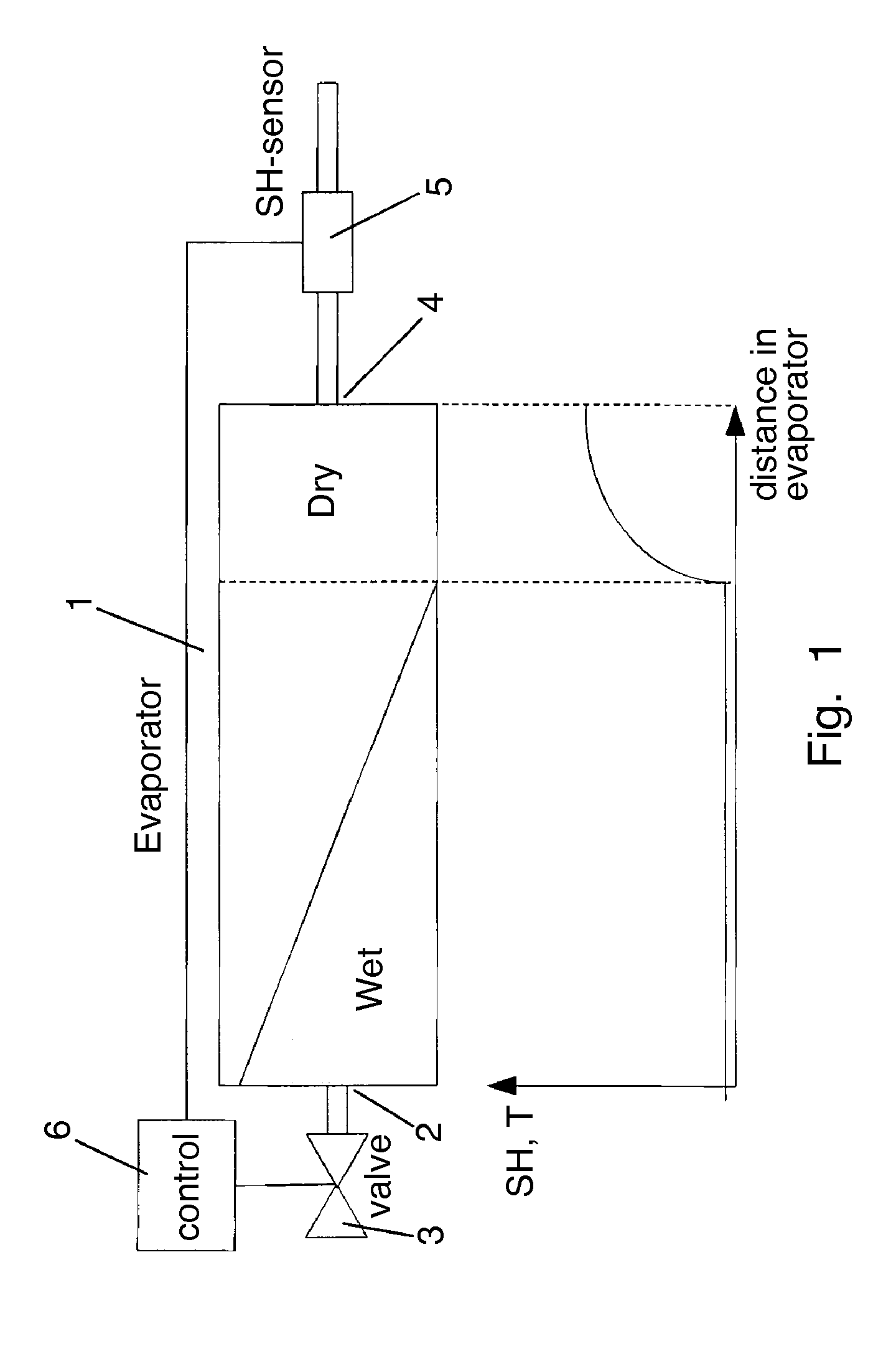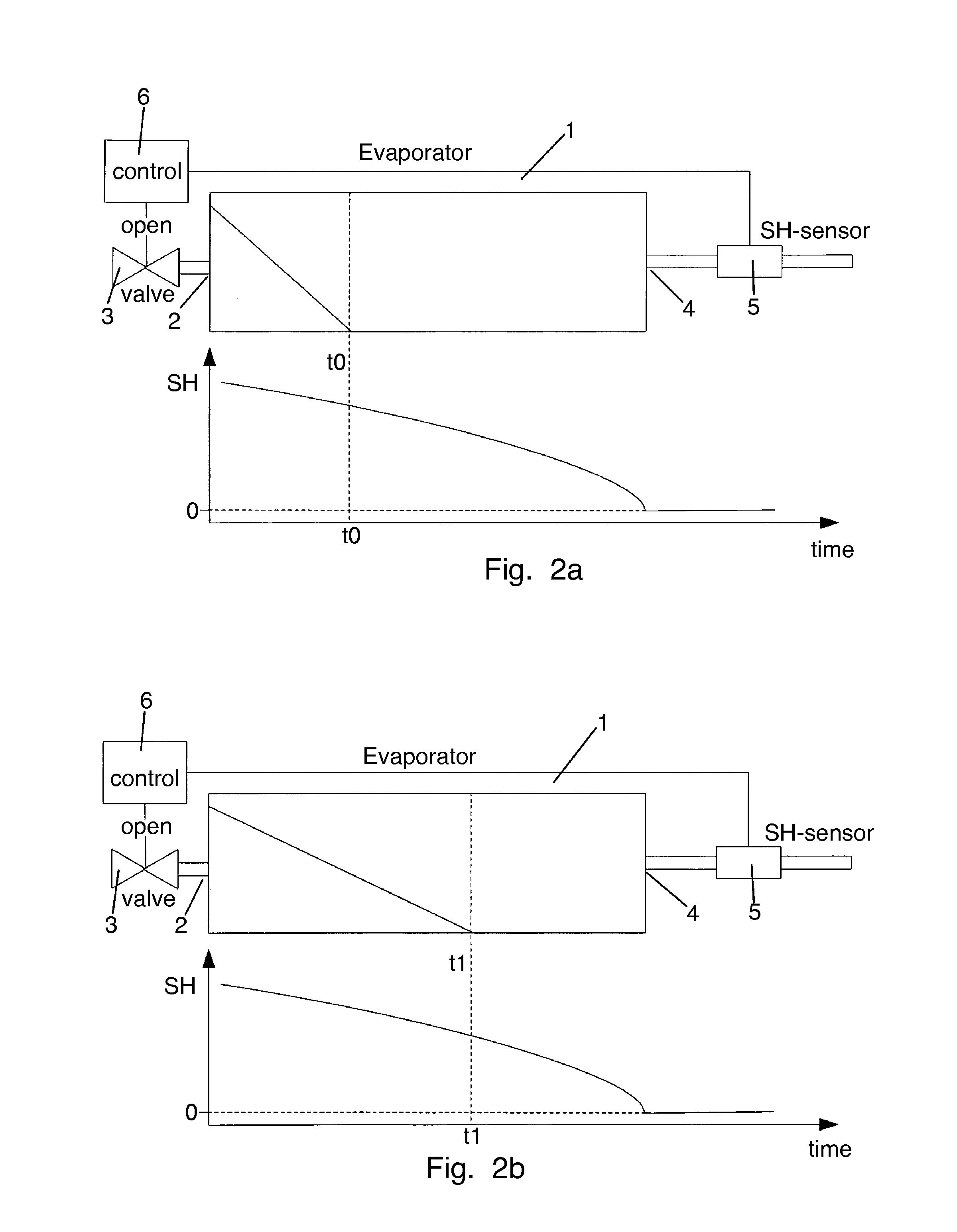Method for calibrating a superheat sensor
a superheat sensor and sensor technology, applied in the direction of material thermal analysis, lighting and heating apparatus, instruments, etc., can solve the problems of increasing manufacturing costs, affecting the quality of products, so as to reduce the load, reduce the amount of liquid refrigerant in the evaporator, and reduce the evaporation of refrigeran
- Summary
- Abstract
- Description
- Claims
- Application Information
AI Technical Summary
Benefits of technology
Problems solved by technology
Method used
Image
Examples
Embodiment Construction
[0044]FIG. 1 is a schematic view of an evaporator 1 arranged in a refrigeration path of a refrigeration system. The evaporator 1 comprises an inlet 2 which is fluidly connected to an expansion valve 3. The opening degree of the expansion valve 3 determines the supply of refrigerant to the evaporator 1. The evaporator 1 further comprises an outlet 4 which is fluidly connected to a superheat sensor 5.
[0045]The superheat sensor 5 measures one or more parameters which is / are relevant to the superheat of the refrigerant leaving the evaporator 1 via the outlet 4. The superheat sensor 5 may measure corresponding values of the temperature and the pressure of the refrigerant leaving the evaporator 1. Alternatively, the superheat sensor 5 may be adapted to measure a single parameter which is representative for the superheat of the refrigerant leaving the evaporator 1.
[0046]The superheat sensor 5 supplies the result of such measurements to a control unit 6. Based on the received results the co...
PUM
| Property | Measurement | Unit |
|---|---|---|
| rotational speed | aaaaa | aaaaa |
| temperature | aaaaa | aaaaa |
| pressure | aaaaa | aaaaa |
Abstract
Description
Claims
Application Information
 Login to View More
Login to View More - R&D
- Intellectual Property
- Life Sciences
- Materials
- Tech Scout
- Unparalleled Data Quality
- Higher Quality Content
- 60% Fewer Hallucinations
Browse by: Latest US Patents, China's latest patents, Technical Efficacy Thesaurus, Application Domain, Technology Topic, Popular Technical Reports.
© 2025 PatSnap. All rights reserved.Legal|Privacy policy|Modern Slavery Act Transparency Statement|Sitemap|About US| Contact US: help@patsnap.com



